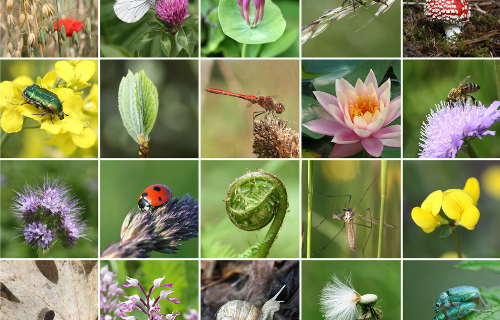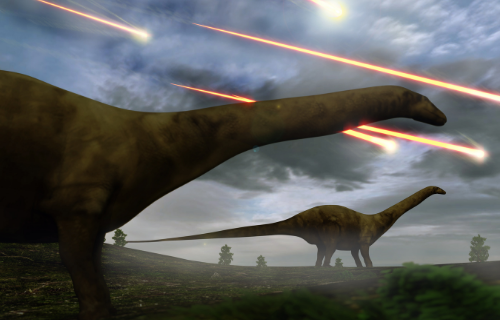Difference Between Biodiversity Loss and Extinction

Biodiversity Loss
What is biodiversity?
Biodiversity, or biological diversity, refers to the variety or number of different species of animal, plant, bacteria, fungus, etc., in a given ecosystem. Areas with more biodiversity tend to have climates that are conducive to plant growth. It is for this reason that wet, tropical areas tend to be the most biodiverse regions. Biodiversity can refer to global biodiversity or to biodiversity in a specific region. Parts of the world known for having high levels of biodiversity include Madagascar, Brazil, the southwestern United States, and India.
What is loss of biodiversity?
Biodiversity loss refers to a decline in biodiversity, or the number of different species in a given ecosystem over time. Biodiversity loss can refer to a global loss in biodiversity or to a loss of biodiversity within a given region.
Biodiversity loss is a problem for a variety of reasons. Biodiversity loss in an ecosystem makes the ecosystem more susceptible to disruptions, such as natural disasters, sudden changes to the climate, and pathogens. More biodiverse systems will generally be more resilient. For example, if a disease or newly introduced pest causes the extinction of a common tree species in a forest, it will not make much of a difference to the forest ecosystem if there are many other tree species which can fill the ecological niche left by the tree that went extinct. If, however, there are very few tree species, it is less likely that there will be another tree species which can make up for the loss of the now-extinct species to that ecosystem. This may mean that organisms that relied on the now extinct tree species will not be able to survive. This will, in turn, affect organisms relying on the organisms that relied on the extinct tree, and so on, creating a cascading effect that could lead to ecological collapse in that forest.
Additionally, biodiversity provides what scientists refer to as ecosystem services to human civilization. These services include pollination, nutrient cycling, and creating a stable climate, among other global necessities. These services would be extremely costly if this had to be done using human technology rather than through natural ecosystems. Loss of biodiversity, as a result, is also a threat to human civilization since it threatens the ecosystems on which humans rely for ecosystem services.
What are the factors that cause biodiversity loss?
In general, geological processes, such as volcanism and asteroid impacts, climate change, and biological invaders from outside an ecosystem have always been a cause of biodiversity loss. Many modern causes of biodiversity loss are from human activity and ultimately due to issues such as the growing human population and overconsumption. Habitat loss, human-introduced invasive species, and anthropogenic climate change are all major drivers of current biodiversity loss.

Extinction
What is extinction?
Extinction refers to the complete dying out of a species. Extinctions have happened throughout the history of life on Earth. When an event occurs that leads to the extinction of many species at the same time, it is called a mass extinction.
There have been five major mass extinctions in Earth’s history. The first mass extinction in Earth’s history was the Ordovician-Silurian mass extinction which occurred about 445 million years ago, leading to the extinction of many marine invertebrates, including trilobites, coral species, and brachiopods. It is believed to have been caused by climate and habitat changes due to the movement of the supercontinent Gondwana. The second major mass extinction was the Devonian mass extinction which occurred around 370 million years ago, though it may have taken place over the course of as much as 25 million years. Famous casualties during this mass extinction include most coral species at the time as well as placoderms, a type of bony fish. The third mass extinction was the deadliest, the Permian-Triassic mass extinction, which occurred about 252 million years ago. Scientists are not sure what caused it, but 95% of marine life and 70% of land-dwelling vertebrates perished in this event. The next mass extinction occurred at the end of the Triassic, about 200 million years ago, and paved the way for the rise of the dinosaurs. Of course, the dinosaurs themselves perished during the fifth and final of these five historical mass extinctions. About 66 million years ago, all non-avian dinosaurs died out due to a combination of an asteroid impact and a prolonged period of intense volcanic activity, which led to the formation of the modern Deccan Traps.
Scientists believe that we are currently in the midst of a sixth mass extinction, sometimes called the Holocene mass extinction. This one is mostly driven by human activity. So far, it has led to the extinction of most North American and Australian megafauna as well as the endangerment of the remaining African and Eurasian megafauna.
What are the factors that cause extinction?
Over the course of life on Earth, the primary causes of extinction have included climate change, asteroid impacts, major volcanic eruptions, and the intrusion of a new species into an ecosystem, among other causes. The underlying factor relating many of these causes is habitat loss. If the environment to which a species is adapted ceases to exist, that species will likely also cease to exist unless it can adapt soon enough.
Similarities between biodiversity loss and extinction
How is extinction related to biodiversity?
Extinction refers to the dying out of a species. If this happens faster than new species can evolve to replace the old species, it will lead to biodiversity loss.
What is the role of extinction in biodiversity loss?
Extinction, or the removal of species because of not being able to adapt to their changing environment, is the primary mechanism through which biodiversity loss happens. On the other hand, the extinction of one species can open ecological niches for other species to fill, as happened with mammals after the extinction of the dinosaurs. In this way, extinction can also lead to a future increase in biodiversity or a reversal of biodiversity loss.
Differences between biodiversity loss and extinction
Although the concepts of biodiversity loss and extinction are related, there are also important differences. These include the following.
- Extinction refers to the disappearance of one or more species, whereas biodiversity loss is the result of multiple extinctions happening over an extended period of time.
- Extinction is an event geologically speaking, whereas biodiversity loss is a process.
- Extinction, once it happens, cannot be reversed, whereas biodiversity loss can be reversed by the introduction of new species over time.
- Extinction may only involve one species, whereas biodiversity loss involves the relationships between multiple species.
Biodiversity loss vs. extinction

Summary
Biodiversity loss refers to the decline in the variety or number of species of animals, plants, fungi, bacteria, etc., over time. It can lead to ecosystems becoming less resilient to changes in the environment. It also results in the loss of ecosystem services to humanity. The underlying cause of biodiversity loss today is mostly due to human activity, but over the course of Earth’s history it has been caused by many factors, including climate change and geological processes, such as volcanism. Extinction refers to a single species dying out. A mass extinction is when a very large number of species die out at the same time. There have been five such mass extinctions and we might be living through a sixth. Extinctions are caused by changes to the environment that make it harder for a species to survive and thrive. These changes can be caused by climate change, volcanic eruptions, and asteroid impacts, among other common causes. Biodiversity and extinction are similar in that they both involve the disappearance of species over time. Biodiversity and extinction, however, differ in important ways as well. Biodiversity loss is the result of multiple extinctions occurring over time. Biodiversity loss is also a process that is reversible, because of the evolution of new species. It also always involves the inter-relationships between multiple species. Extinction, on the other hand, geologically speaking, is an event that results in the disappearance of a species, or many species in the case of a mass extinction, rather than a process. Extinction is the mechanism of biodiversity loss. Extinction is also irreversible, like death, and may only involve the disappearance of a single species.
- Difference Between Environmental Performance Index and Development - November 24, 2023
- Difference Between Environmental Intervention and Development - November 8, 2023
- Difference Between Eco Efficiency and Eco Effectiveness - September 18, 2023
Search DifferenceBetween.net :
Leave a Response
References :
[0]Cleland, E. E. “Biodiversity and Ecosystem Stability.” Nature Education Knowledge 3.10 (2011):14
[1]Gittleman, John L. "extinction". Encyclopedia Britannica, 3 Feb. 2022, https://www.britannica.com/science/extinction-biology. Accessed 4 February 2022.
[2]Holzman, David C. "Accounting for nature's benefits: the dollar value of ecosystem services." (2012): a152-a157. https://www.ncbi.nlm.nih.gov/pmc/articles/PMC3339477/.
[3]Longrich, Nicholas R. “Mass extinctions made life on Earth more diverse – and might again.” The Conversation, https://theconversation.com/mass-extinctions-made-life-on-earth-more-diverse-and-might-again-122350#:~:text=For%20one%2C%20the%20most%20rapid,foods%2C%20new%20means%20of%20locomotion. Accessed 5 Feb. 2022.
[4]“Mass Extinction Events.” American Museum of Natural History, n.d., https://www.amnh.org/exhibitions/dinosaurs-ancient-fossils/extinction/mass-extinction.
[5]Osterloff, Emily. “How an asteroid ended the age of the dinosaurs.” Natural History Museum, https://www.nhm.ac.uk/discover/how-an-asteroid-caused-extinction-of-dinosaurs.html. Accessed 5 Feb. 2022.
[6]“The World’s 17 Megadiverse Countries.” WorldAtlas, n.d., https://www.worldatlas.com/articles/ecologically-megadiverse-countries-of-the-world.html.
[7]“What Is Biodiversity?” American Museum of Natural History, n.d., https://www.amnh.org/research/center-for-biodiversity-conservation/what-is-biodiversity.
